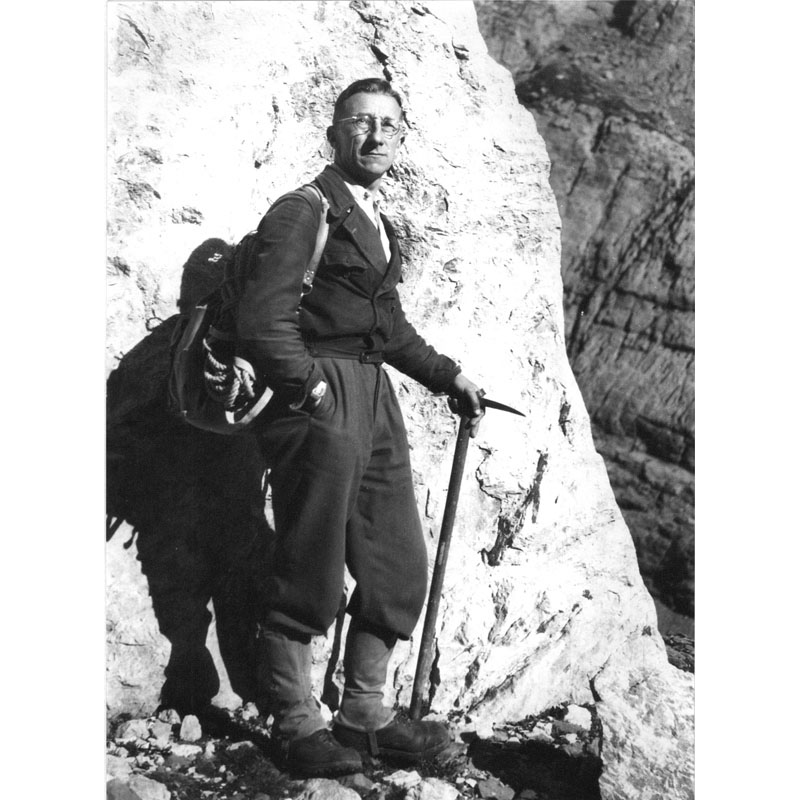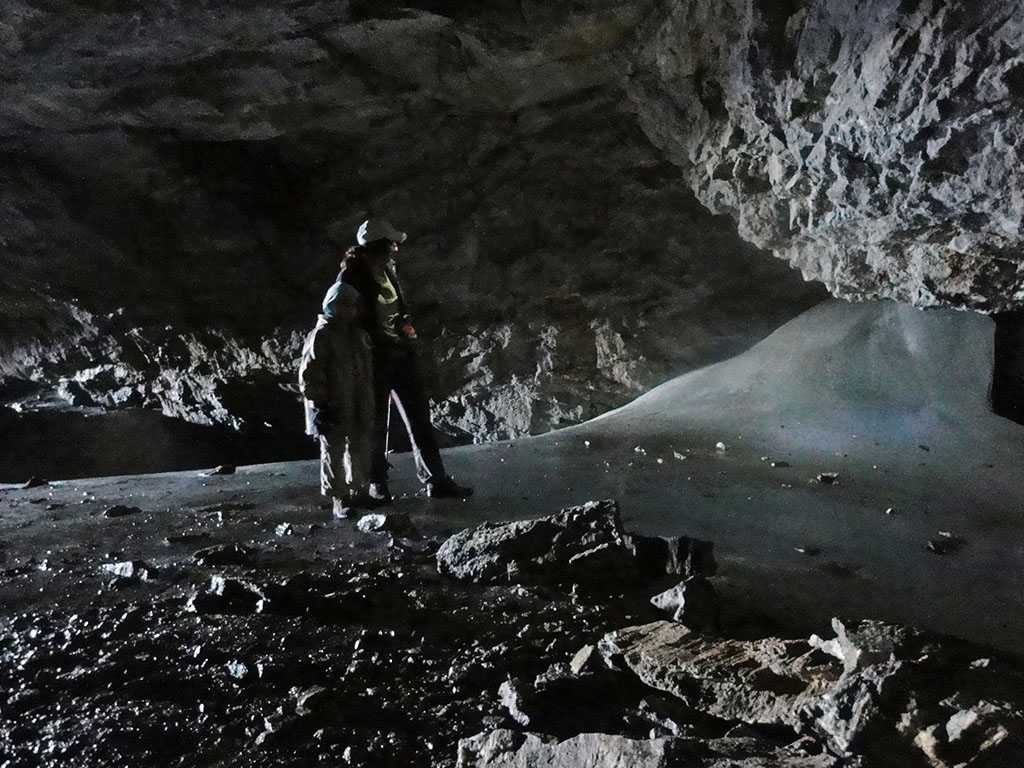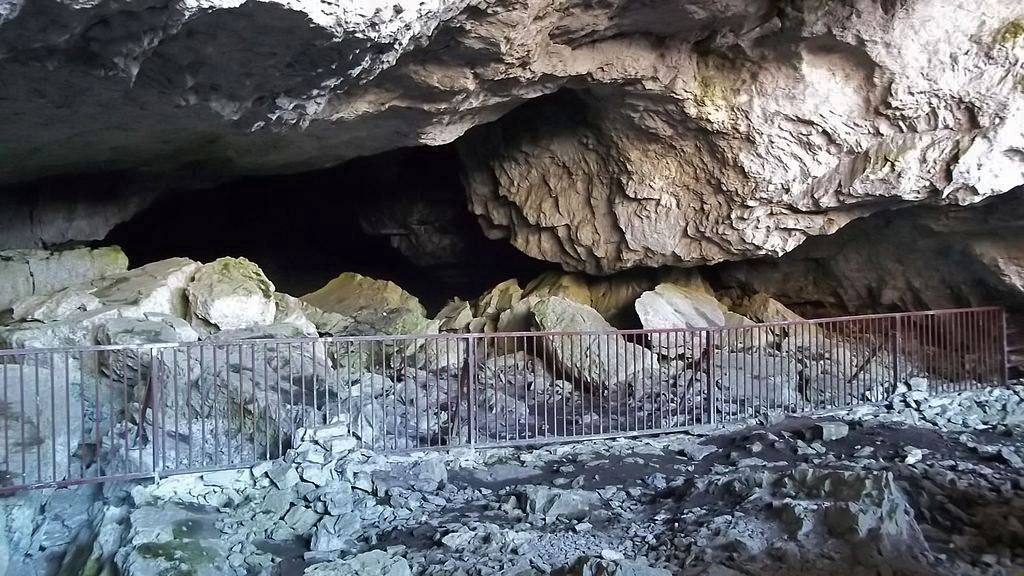In the footsteps of Norbert: an underground glacier in the Casteret Ice Grotto

The Casteret Ice Grottowithin the Ordesa y Monte Perdido National Parkis one of the last caves with fossil ice to be found in the Pyrenees. A frozen spectacle of undeniable beauty, threatened by climate change and human beings, which has remained like this for thousands of years.
A bit of history
On 25 June 1926, a group formed by Norbert Casterethis wife Elisabeth, his brother Martial and their mother, Madame Casteret, set off from the village of Gavarnie with the intention of reaching the summit of Mont Perdu. In the afternoon, after spending the whole day walking, the group reached the Gap of Roland. They were still a long way from their goal, but after being caught in a storm, they decided to spend the night in a small cave south of Bazillac Peak known as Villa Gaurier (the first Pyrenean "refuge", built in 1883 by Count Russel).
The next day they resume their march, but shortly after starting out, they spot what looks like the entrance to a cave. Norbert goes there to check it out and is astonished. A river of ice stretches out before his eyes, disappearing into the bowels of the mountain. Norbert goes a few metres into the cave, but as he is not equipped, he decides to continue the walk with the group. A month later he returns with his wife Elisabeth to explore the cave.

The discovery of the frozen cave had a certain impact in the French press at the time, but also among Spanish newspapers, including an article published in 1928 by The Aragonese Crusader entitled: "An underground glacier in the Pyrenees. The Casteret Grotto"..
But the discovery was of particular interest to the mountaineering community, so much so that the Club Alpin Français (CAF) came to call it Grotte Glacée Casteret (Casteret Ice Cave), the name by which it has survived to the present day.
To tell the truth, although Norbert Casteret was the person who explored the cave and made it known to the general public, the existence of the cave was already known by some shepherds in the area and was given the name of Black wig.
The Icy Cave of Casteret
The Casteret Icy Cave is located within the Ordesa y Monte Perdido National Parkvery close to the Rolando Gapon the western slope of Pico Anónimo.
The presence of caves with fossil ice in the Pyrenees is a rarity which, however, is not so rare in the Ordesa and Monte Perdido National Park area, where some 35 have been counted. It should be borne in mind that Monte Perdido is the highest limestone mountain in Europe and that, in its surroundings, there is a highly developed karst at an altitude of over 2,800 metres. In fact, it is said that the Gruta Helada de Casteret is the highest cave of its kind on the planet (2,765m).

As is well known, the formation of caves is one of the best known peculiarities of limestone environments, and at this altitude, the presence of ice is not unusual either. However, seasonal ice should not be confused with seasonal ice. fossil iceThe water has been frozen for thousands of years and remains frozen because the temperature is always below freezing.
But as with the retreat and virtual disappearance of Pyrenean glaciers, the ice in the outermost part of this type of cavity is also suffering the effects of global warming and disappears during the summer (seasonal ice).

However, the interior of many of these caves still contains fossil ice and, in the Casteret Ice Cave, the bottom is occupied by an underground glacier on which there is an icy lake, stalagtites and stalagmites of ice and even a waterfall christened the Frozen Niagara.
Excursion to the frozen cave of Casteret
Approaching the entrance to the Casteret Cave is not an excursion for everyone. Any chosen route involves overcoming significant slopes and walking for several hours in high mountain terrain.
In addition, entrance to the cave is not allowed.. In order to preserve the site, a metal gate was installed at the entrance several years ago and access is only allowed for scientific purposes, subject to a permit. Apart from this, it is not easy to enter the cave and requires knowledge of caving and technical equipment, as well as ice axes and crampons.

However, a visit to the entrance of the cave, following in the footsteps of Norbert Casteret, can form part of other interesting excursions such as the ascent of the Taillon (3,144m), the Helmet (3,006m) or the Rolando Gap.
- From the Ordesa meadow through the Cotatuero peaks: This is the quickest, most direct and spectacular access, however, those who suffer from vertigo will prefer other routes. The Cotatuero peaks are exposed and impressive, but easy. In total, about 5 hours of ascent.
- From the Ordesa meadow via the Góriz refuge: the route runs through the entire Ordesa valley, passing well-known places such as the Gradas de Soaso or the Cola de Caballo up to the Góriz refuge (4h), from where there are still another three hours of walking (7 hours in total).
- From Gavarnie via the Sarradets refuge: An equally demanding route starting from Gavarnie, at an altitude of around 1350m, which climbs up the Sarradets Stairs to the Sarradets refuge (4 hours) and then crosses the Rolando Gap (6 hours in total).
Don't miss any adventure in the Pyrenees!
